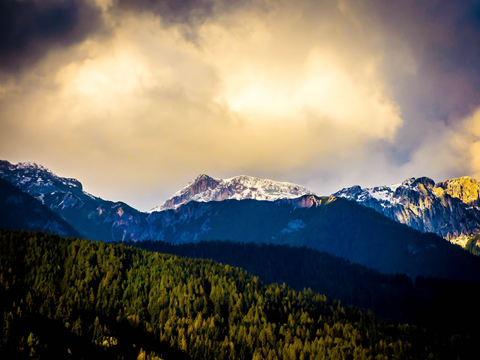I’ve just returned from leading a NOLS wilderness course in the Absaroka Mountains on the southern border of Yellowstone National Park. I saw a grizzly bear sow with two cubs close enough to be uncomfortable, heard wolves howl just outside our camp, and enjoyed the diverse wildflowers in a beautiful wilderness. I also experienced the hottest temperatures I can remember in 30 years of traveling in the Wyoming mountains. Gosh it was hot. I could stand in the Buffalo Fork for 30 minutes fly fishing in water up to my thighs without having my legs become numb. This is astounding. The daytime temperatures must have been in the high 80’s F and the nighttime lows in the 50’s. I never wore more than a light nylon wind shirt over a cotton shirt.
It was clear by the second day that we had to behave in these mountains as if we were living in a hot desert. The students were not acclimated to either the altitude or the heat, so we needed to watch their stress and give their physiology time to adjust, especially the women. Luanne Freer MD, past president of the Wilderness Medical Society (WMS), noted in a talk at the WMS Annual Conference last week (www.wms.org) that women take longer than men to acclimatize to hot environments.
We also needed to use good habits for living and traveling in hot environments; drinking enough water to stay hydrated, and eating to prevent hyponatremia. We talked about urinating clear light yellow urine, and wearing hats to keep the sun off our heads and necks. We rested in shade – at times hard to find as we hiked through some of the burned areas from the fires of ’88 – and sought water to lie in once a day to dump the heat stress. I had to carry water and pay attention to where the next water source may be, something I’d never had to think about in these mountains.
As a wise leader once told me, “when the going gets tough, the tough go camping.” I pulled off the trail early one day because some of my students looked very tired and sweaty, and a few had headaches and felt dizzy. These are early signs of possible heat illness. We rested in shade, lay in a river, drank water and got a good nights sleep. The following day we woke at dawn to hike in the relative morning cool.
Heat wave or global warming? It doesn’t matter when you’re in the middle of it. One of the attributes of wilderness I appreciate is the immediacy of the world. If it’s wet and cold we don’t hide inside, we use our clothing, skills and good habits to stay dry and warm. If it’s hot, we don’t turn the air conditioner on, we use our brains and find ways to live in rhythm with the weather.
Take care
Tod


